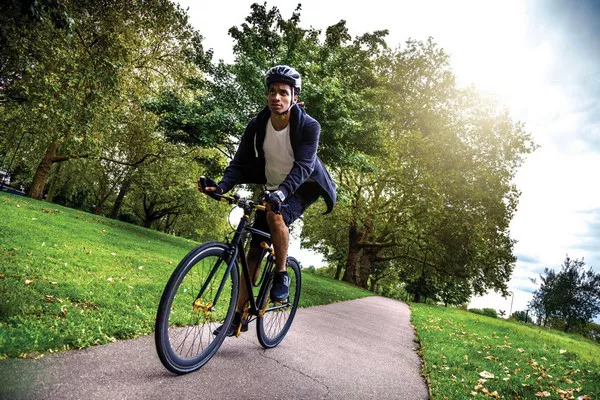Endurance cycling demands not only physical stamina but also meticulous attention to nutritional intake. Whether you’re embarking on a century ride or a multi-day tour, what you eat before, during, and after your journey can significantly impact your performance and recovery. In this article, we delve into the essential nutritional needs for endurance cycling and provide practical recommendations to fuel your ride effectively.
Nutritional Needs for Endurance Cycling:
Endurance cycling places considerable demands on the body, requiring a strategic balance of carbohydrates, protein, fats, electrolytes, and hydration to sustain performance over extended periods. Here’s why each component is vital:
1. Carbohydrates: Serve as the primary fuel source during prolonged exercise, replenishing glycogen stores in muscles and liver. Aim for complex carbohydrates like whole grains, fruits, and vegetables to provide sustained energy throughout your ride.
2. Protein: Essential for muscle repair and recovery, especially after intense exertion. Incorporate lean sources such as chicken, fish, beans, and legumes to support muscle maintenance and growth.
3. Fats: Act as a secondary energy source during endurance activities, particularly at lower intensities. Opt for healthy fats from nuts, seeds, avocados, and fatty fish to enhance endurance and provide satiety.
Electrolyte balance and proper hydration are equally crucial for maintaining performance and preventing dehydration and electrolyte imbalances. Ensure adequate intake of sodium, potassium, magnesium, and calcium through both food and hydration sources.
Pre-Ride Fueling:
Your pre-ride meal lays the foundation for sustained energy throughout your cycling adventure. Focus on consuming easily digestible, carbohydrate-rich foods approximately 2-3 hours before your ride to top up glycogen stores and optimize blood glucose levels. Timing is key to prevent the dreaded “bonk” or sudden energy depletion mid-ride. Consider these pre-ride fueling options:
1. Oatmeal with bananas and a drizzle of honey: Provides a balance of complex carbohydrates for long-lasting energy and a touch of protein for muscle support.
2. Whole grain toast with almond butter and sliced strawberries: Offers a mix of carbohydrates, healthy fats, and protein to fuel your ride and keep hunger at bay.
3. Greek yogurt with granola and mixed berries: Delivers a blend of carbohydrates, protein, and fats for sustained energy and muscle recovery.
In addition to a substantial meal, consider snacking on easily digestible options like energy bars, bananas, or rice cakes in the hour leading up to your ride for an extra energy boost without overloading your stomach.
On-the-Bike Nutrition:
During long rides, regular fueling is essential to maintain energy levels and stave off fatigue. Choose easily portable, quick-digesting snacks that won’t weigh you down or cause gastrointestinal distress. Some on-the-bike nutrition options include:
1. Energy gels: Provide a concentrated source of carbohydrates for rapid energy release without bulk. Consume one gel every 45-60 minutes along with water to prevent energy dips.
2. Energy bars: Offer a balance of carbohydrates, protein, and fats for sustained energy and muscle support. Aim to eat a small portion every 1-2 hours to maintain a steady fuel supply.
3. Fruit slices (e.g., oranges, grapes): Supply natural sugars for energy along with hydration and essential vitamins and minerals. Pack bite-sized pieces in a zip-top bag for convenient munching on the go.
Remember to hydrate regularly with water or electrolyte beverages to replace fluids lost through sweat and maintain optimal performance. Aim to drink 16-20 ounces of fluid per hour, adjusting based on temperature, humidity, and individual sweat rate.
Post-Ride Recovery:
Effective recovery starts as soon as you dismount your bike. To replenish glycogen stores, repair muscle tissue, and facilitate recovery, prioritize nutrient-rich foods and hydration within the first 30-60 minutes post-ride. Consider these post-ride recovery options:
1. Chocolate milk: Provides an ideal ratio of carbohydrates to protein for muscle recovery and glycogen replenishment. Plus, it offers hydration and essential nutrients like calcium and vitamin D.
2. Quinoa salad with grilled chicken and mixed vegetables: Offers a combination of carbohydrates, lean protein, and vitamins to support muscle repair and replenish nutrients lost during exercise.
3. Smoothie with spinach, banana, protein powder, and almond milk: Delivers a blend of carbohydrates, protein, and antioxidants to promote muscle recovery and reduce inflammation.
In addition to food, prioritize hydration with water or electrolyte-rich beverages to replace fluids and minerals lost during your ride. Aim to drink at least 16-24 ounces of fluid for every pound of body weight lost during exercise to ensure proper rehydration.
Additional Considerations:
Individual dietary preferences and needs, such as vegan or gluten-free diets, should be accommodated to meet nutritional requirements without compromising performance. Experiment with different foods and hydration strategies during training rides to identify what works best for you and minimize the risk of gastrointestinal issues.
Real-world examples and case studies of successful long-distance cyclists can provide valuable insights into effective nutrition plans and strategies. Pay attention to their fueling practices and adapt them to suit your own needs and goals.
Creating a personalized nutrition plan based on your individual requirements, training regimen, and performance goals is key to optimizing your endurance cycling experience. Consult with a sports nutritionist or dietitian to develop a tailored approach that maximizes your performance potential and supports long-term health and well-being.
Conclusion
In conclusion, fueling your long-distance cycling journey requires careful attention to nutritional intake before, during, and after your ride. By prioritizing carbohydrates, protein, fats, electrolytes, and hydration, and adopting strategic fueling strategies, you can optimize your performance, enhance recovery, and achieve your cycling goals with confidence.

